Linear Bench Power Supplies
The working principle of a linear DC bench power supply begins with reducing the voltage amplitude of the AC power source using a transformer. The transformed voltage is then converted into pulse DC power through a rectifier circuit. After undergoing a filtering process, the output is a DC voltage with minimal ripple. In addition, a voltage regulation circuit is used to ensure high-precision output DC voltage.
Linear DC bench top power supplies are widely used in fields such as scientific research, laboratories, electrolysis, electroplating, and charging equipment. Their advantages include:
- High Output Stability: Linear power supplies exhibit minimal fluctuations in output voltage, making them ideal for devices that require extremely stable voltage.
- Low Ripple: Due to the incorporation of filtering circuits, linear power supplies produce very low ripple (the AC component in the output), ensuring clean and stable performance.
- Minimal Electromagnetic Interference (EMI): Linear power supplies generate very little electromagnetic interference during operation, making them particularly suitable for applications with stringent electromagnetic compatibility requirements.
- Simple Design: The relatively straightforward design of a DC linear power supply facilitates easier maintenance and troubleshooting.
Showing 1–18 of 93 results
-
SALE 
eTM-1501DF, Variable Linear DC Power Supply Bench 0-150V 0-1A with LED Display, Multiple Safety Protections, Encoder Adjustment Knob
$699.00Original price was: $699.00.$359.00Current price is: $359.00. -
SALE 
eTM-1501DP, 150V 1A Regulated Linear DC Bench Power Supply Programmable with 4-Digit LED Display, Output Enable/Disable Button, Optional RS232/RS485/USB Port
$769.00Original price was: $769.00.$449.00Current price is: $449.00. -
SALE 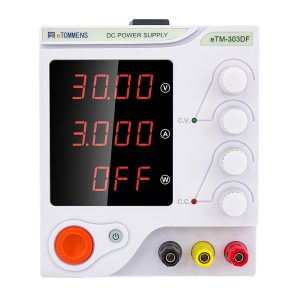
eTM-303DF, Variable Linear DC Power Supply Bench 0-30V 0-3A with LED Display, Multiple Safety Protections, Encoder Adjustment Knob
$599.00Original price was: $599.00.$199.00Current price is: $199.00. -
SALE 
eTM-303DP, 30V 3A Regulated Linear DC Bench Power Supply Programmable with 4-Digit LED Display, Output Enable/Disable Button, Optional RS232/RS485/USB Port
$599.00Original price was: $599.00.$199.00Current price is: $199.00. -
SALE 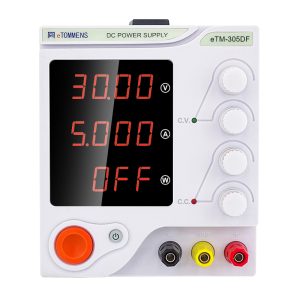
eTM-305DF, Variable Linear DC Power Supply Bench 0-30V 0-5A with LED Display, Multiple Safety Protections, Encoder Adjustment Knob
$599.00Original price was: $599.00.$199.00Current price is: $199.00. -
SALE 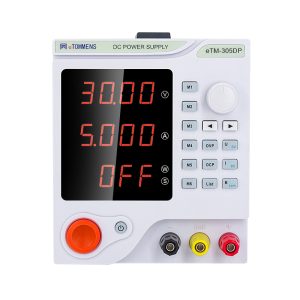
eTM-305DP, 30V 5A Regulated Linear DC Bench Power Supply Programmable with 4-Digit LED Display, Output Enable/Disable Button, Optional RS232/RS485/USB Port
$599.00Original price was: $599.00.$199.00Current price is: $199.00. -
SALE 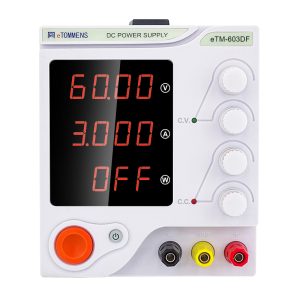
eTM-603DF, Variable Linear DC Power Supply Bench 0-60V 0-3A with LED Display, Multiple Safety Protections, Encoder Adjustment Knob
$649.00Original price was: $649.00.$249.00Current price is: $249.00. -
SALE 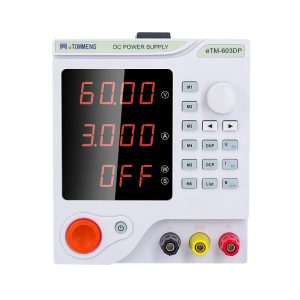
eTM-603DP, 60V 3A Regulated Linear DC Bench Power Supply Programmable with 4-Digit LED Display, Output Enable/Disable Button, Optional RS232/RS485/USB Port
$599.00Original price was: $599.00.$349.00Current price is: $349.00. -
SALE 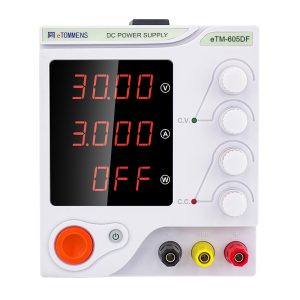
eTM-605DF, Variable Linear DC Power Supply Bench 0-60V 0-5A with LED Display, Multiple Safety Protections, Encoder Adjustment Knob
$699.00Original price was: $699.00.$359.00Current price is: $359.00. -
SALE 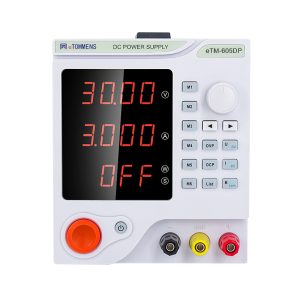
eTM-605DP, 60V 5A Regulated Linear DC Bench Power Supply Programmable with 4-Digit LED Display, Output Enable/Disable Button, Optional RS232/RS485/USB Port
$659.00Original price was: $659.00.$399.00Current price is: $399.00. -
SALE 
eTM-L1501SP, High Precision Linear DC Programmable Bench Power Supply 150V 1A with 5-Digit Blue Scree, Front SENSE Interface, OVP/OCP Settings
$999.00Original price was: $999.00.$699.00Current price is: $699.00. -
SALE 
eTM-L1501SP+, 150V 1A Linear DC Programmable Benchtop Power Supply with High Precision 6-Digit Blue Screen, RS232 Communication Port, PC Software Control
$1,299.00Original price was: $1,299.00.$999.00Current price is: $999.00. -
SALE 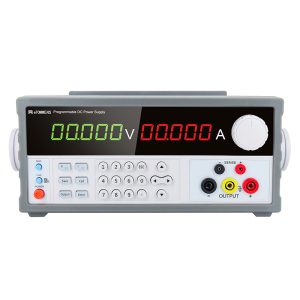
eTM-L1501SPD, Programmable Bench Linear DC Power Supply Variable 0-150V 0-1A with High Precision 5-Digit Digital Tube Display, Output Switch Control
$999.00Original price was: $999.00.$699.00Current price is: $699.00. -
SALE 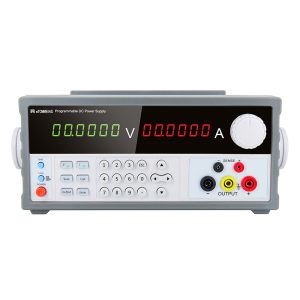
eTM-L1501SPD+, High Precision 0-150V 0-1A Linear DC Programmable Power Supply Bench with 6-Digit Digital Tube Display, Front SENSE Serial Port
$2,199.00Original price was: $2,199.00.$1,049.00Current price is: $1,049.00. -
SALE 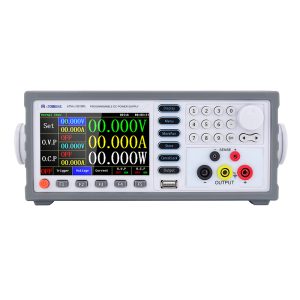
eTM-L1501SPL, Programmable DC Linear Test Bench Power Supply 150V 1A with 5-Digit Color Screen, One-Click Lock Key, Front SENSE Serial Port
$1,099.00Original price was: $1,099.00.$799.00Current price is: $799.00. -
SALE 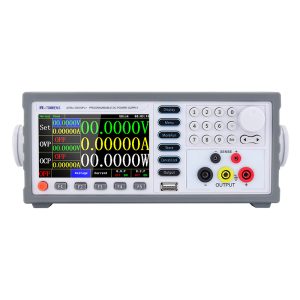
eTM-L1501SPL+, 150V 1A High Precision DC Programmable Benchtop Power Supply Linear with 6-Digit Color Screen, Built-in Buzzer, RS232 Communication Port
$1,599.00Original price was: $1,599.00.$1,149.00Current price is: $1,149.00. -
SALE 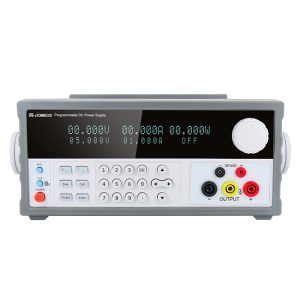
eTM-L1501SPV, Programmable Linear DC Bench Power Supply High Precision 150V 1A with 5-Digit VFD Display, PC Software Control, Multiple Safety Protections
$1,199.00Original price was: $1,199.00.$799.00Current price is: $799.00. -
SALE 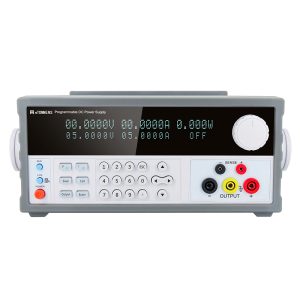
eTM-L1501SPV+, 150V 1A Linear High Precision DC Bench Top Power Supply Programmable with 6-Digit VFD Display, Output Switch Control, Low Noise
$1,749.00Original price was: $1,749.00.$1,199.00Current price is: $1,199.00.
